It’s no mystery why the tiny community of Pond was flooded out this last spring.
All you had to do was drive four miles south to see the massive pile of debris at the Highway 43 bridge to know all that water churning through the normally dry Poso Creek was going to bust out and go somewhere.
It did.
And it headed straight for Pond.
For generations, the Poso has been an intermittent problem child – bone dry most years, then swelling beyond its banks about every six to 10 years, flooding towns, vital roadways and thousands of acres of farmland northwest of Wasco.
Why does it keep happening?
Because there is no entity in charge of keeping the Poso in check, making it a “no man’s land” in the highly regulated world of California water.
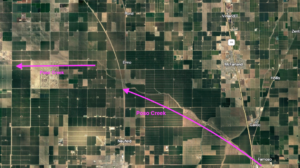
A variety of companies and individuals own chunks of the creek. Some maintain their sections, others may not. Three agricultural water districts have permits to take water from the Poso. But they don’t own the creek bed, nor have authority over its banks and levees.
The Northwest Kern Resource Conservation District encompasses much of the Poso across the valley floor from east of McFarland 25 miles west to the Kern National Wildlife Refuge. The district does own a section of the creek, deeded to it by Kern County in the 1960s, according to General Manager Brian Hockett.
But the conservation district isn’t a flood control agency. Its focus is on irrigation management, Hockett said. There’s nothing in its mandate that allows for Poso Creek maintenance.
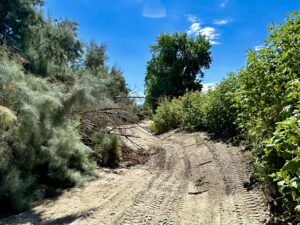
And, most importantly, it doesn’t have the authority to assess properties to raise tax money to pay for maintenance, equipment or personnel. The district tries to maintain its four-mile section of the Poso from Gun Club Road to the refuge, which is miles west of where the creek poses the biggest threat to residents.
“Back in ’98, after that flood, we had a big meeting and said we need to address this and asked who was interested in supporting it financially,” Hockett recalled. “A lot of of people raised their hands. But within a year, no one was willing to keep it up because it got dry again.”
The 1997-98 water year sticks in McFarland Mayor Saul Ayon’s mind as well.
That’s when the Poso overran its banks east of Highway 99 and washed through a dairy carrying mud and manure into the homes of hundreds of McFarland residents. Including Ayon’s parents.
“We’ve been dealing with this for years,” Ayon said. “No one has ever addressed it for the long term. I’m asking everyone, ‘OK, how do we fix it?'”
Thanks to some small sumps built south of McFarland after 1998, the town had only minor flooding this spring. But that’s not good enough for Ayon.
He met with the Army Corps of Engineers and private landowners on the Poso after this year’s flooding to understand how the creek operates and what kinds of long-term solutions they should be shooting for.
“We’re applying for grants and hoping to partner with the county on some ideas,” Ayon said. “But those are only short term answers.
“Why is this a McFarland problem to try and fix?”
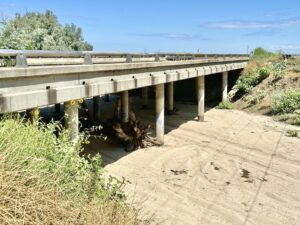
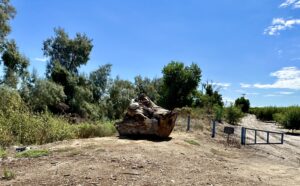
Ayon is right, agreed longtime farmer and Pond Union Elementary School District board member Don Ludy. This shouldn’t be a McFarland problem, or a Pond problem
“They way I see it, this thing is squarely on the county board of supervisors,” Ludy said. “The creek needs to be cleaned out regularly from Highway 65 all the way to the refuge.”
Supervisor David Couch, whose district includes McFarland, Pond and Wasco wants to see a fix as well.
“It needs to happen,” he said. “We can’t go on into the future just accepting the fact that every 10 to 15 years Pond and McFarland are going to be under water.”
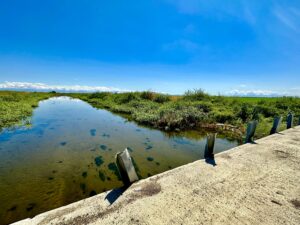
But other than Ayon’s fact-finding efforts, there doesn’t seem to be movement afoot to get local, state and federal agencies in a room to talk about flood control projects, creating a flood control district or how even just how to speed up permitting.
With predictions of a coming El Niño bringing another heavy winter, the clock is ticking. And under Gov. Newsom’s executive order signed earlier this month, emergency levee repairs can be done without typically required permits or review under the California Environmental Quality Act.
“Even though there’s permission, we still have an issue with funding,” Hockett said. Add to that, most of the soil along Poso Creek is still so saturated, it’s impossible to get heavy equipment onto the banks or in the channel.
Which is why Ayon wants a gathering of agencies to work on the long-term. He and Couch are confident they’ll get there.
But even if the Poso is whistle clean from Highway 65 west to Lost Hills Road, once it turns north to the old Tulare Lake bed, there’s another problem.
The J.G. Boswell Farming Company stopped Poso water from flowing into its Homeland Canal along the southern edge of the Tulare Lake bed last spring, forcing water to back up for miles until the creek busted through berms into the lakebed.

Tulare Lake is the low spot in the San Joaquin Valley, where all the creeks and rivers eventually run. Including the Poso.
“All the state, local and federal agencies need to come together, God help ’em, and keep that channel clean,” Ludy said of the Poso Creek. The water needs to spread out past the refuge and continue north. “I doubt Boswell will want it, but he’ll end up with the water anyway.”
Share this:
- Click to share on Facebook (Opens in new window)
- Click to share on Twitter (Opens in new window)
- Click to share on LinkedIn (Opens in new window)
- Click to share on Reddit (Opens in new window)
- Click to share on Tumblr (Opens in new window)
- Click to share on Pinterest (Opens in new window)
- Click to share on Pocket (Opens in new window)
- Click to share on Telegram (Opens in new window)
- Click to share on WhatsApp (Opens in new window)
- Click to print (Opens in new window)
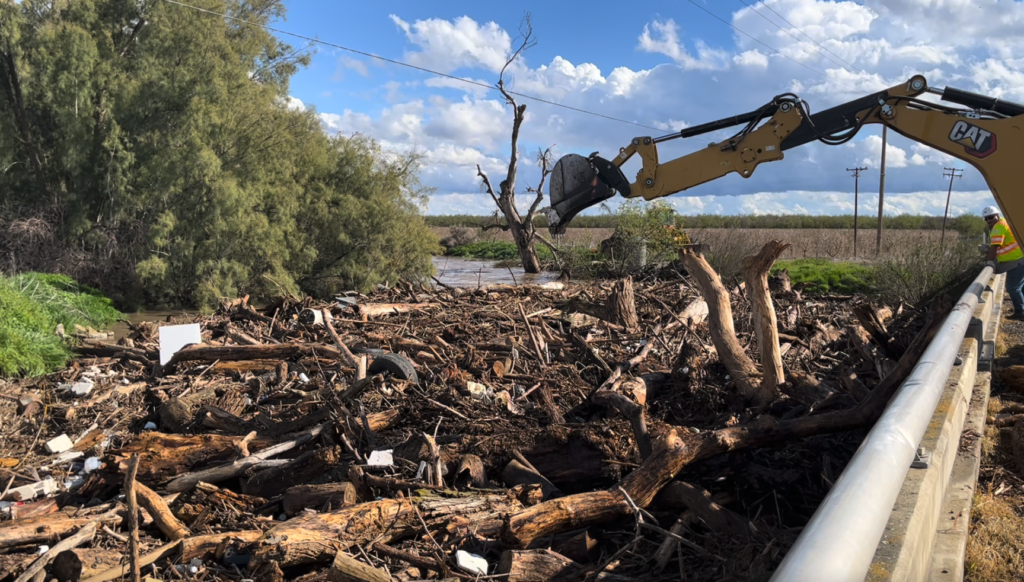







You must be logged in to post a comment.